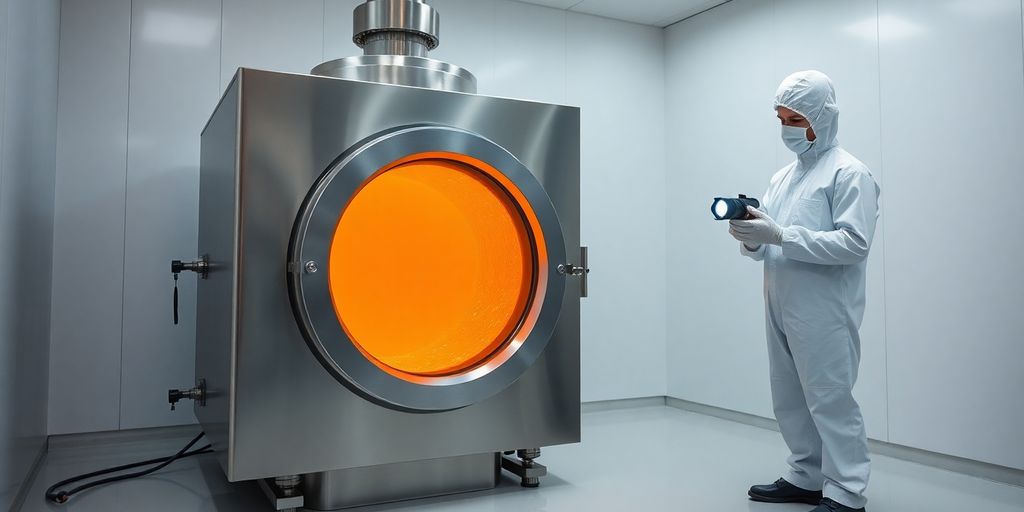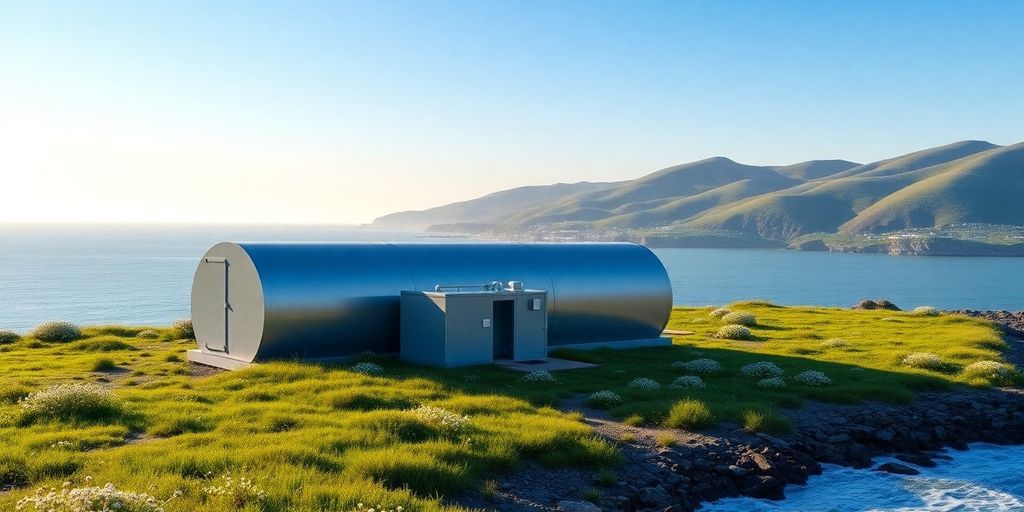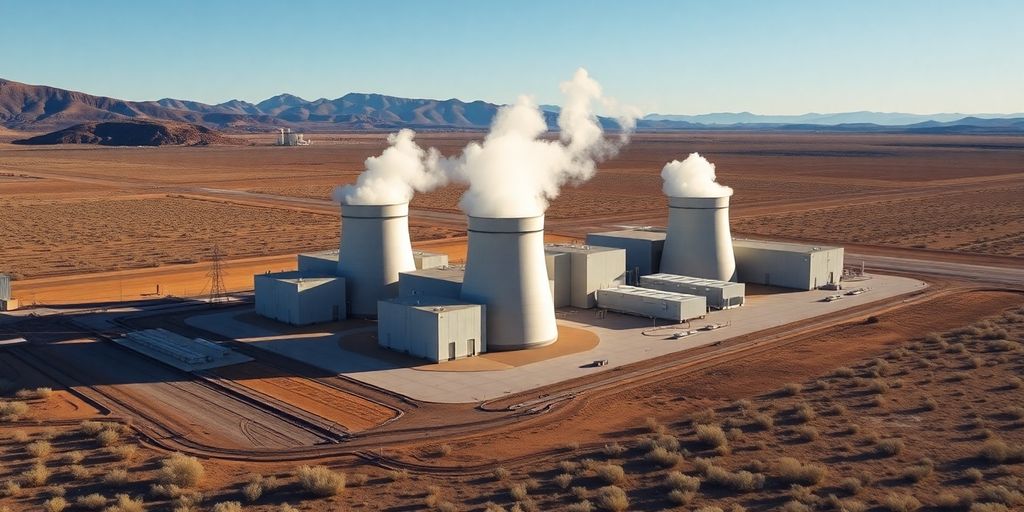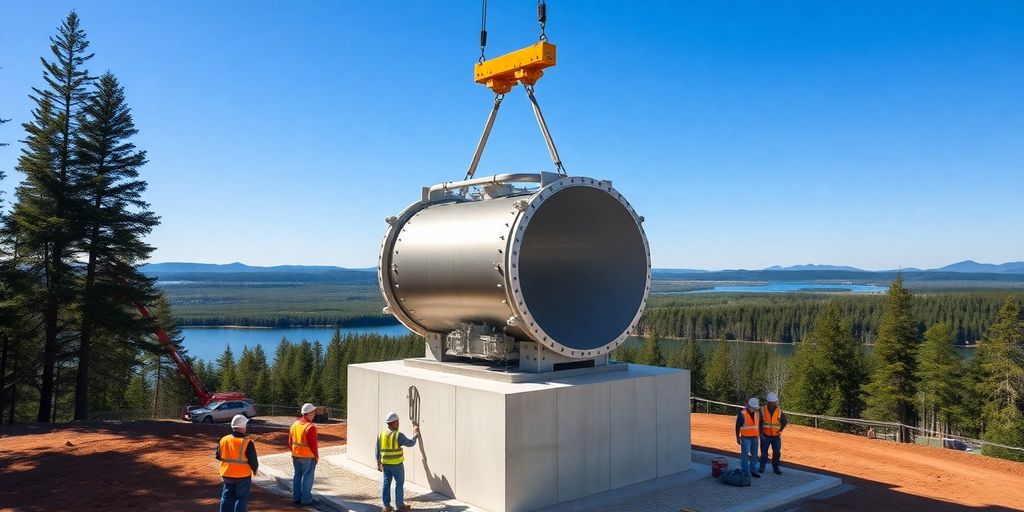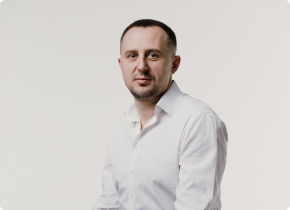Thorium Reactors & Innovation is making waves as a new way to power our lives. In this piece, I break down why thorium could beat uranium, how molten salt designs add a safety boost, and why tiny modular units might pop up next. I’ll also touch on how nations plan to tap into thorium and what it means for money and the planet. Let’s keep it simple and see if this tech is the real deal.
Key Takeaways
- Thorium fuel can pack up to 200 times more energy per kilo than uranium, cutting waste and boosting output.
- Molten salt reactor designs run at lower pressures, so there’s less chance of a meltdown and more room for self-regulation.
- Microreactors in shipping containers could be built fast, set up anywhere, and power farms, factories, or towns.
- Countries like China are mapping thorium reserves, writing new rules, and drawing up plans to plug reactors into the grid.
- Early pilot projects are scoring funding, pushing for shared standards, and lining up certifications to bring thorium power to market.
Advantages of Thorium Reactor Technology
Superior Energy Potential
Thorium is way more abundant than uranium, making it a really attractive fuel source for nuclear reactors. It’s estimated that there’s enough thorium to power the world for centuries! Plus, thorium reactors can potentially extract more energy from the fuel compared to traditional uranium reactors. This means less fuel consumption and less waste overall. It’s like getting more miles per gallon, but for nuclear power.
Minimal Long-Lived Waste
One of the biggest problems with current nuclear reactors is the amount of long-lived radioactive waste they produce. This stuff stays dangerous for thousands of years, which is a major headache for storage and disposal. Thorium reactors, on the other hand, produce significantly less of this type of waste. Reduced radioactive waste is a huge win for the environment and future generations. It’s not zero waste, but it’s a massive improvement.
Enhanced Safety Profiles
Thorium reactors have some cool safety features that make them less prone to accidents. For example, many designs use molten salt as a coolant, which operates at low pressure. This significantly reduces the risk of explosions. Plus, some designs are self-regulating, meaning they can automatically shut down if something goes wrong. It’s like having a built-in emergency brake. These inherent safety features make thorium reactors a much safer option than traditional nuclear power plants.
Thorium reactors offer a promising path toward safer and more sustainable nuclear energy. Their unique characteristics address many of the concerns associated with conventional uranium-based reactors, paving the way for a cleaner and more secure energy future.
Innovations in Molten Salt Reactor Engineering
Molten Salt Reactors (MSRs) are getting a lot of attention, and for good reason. They represent a pretty big shift in how we think about nuclear power. It’s not just about using a different fuel; it’s about rethinking the whole reactor design. Let’s look at some of the cool innovations happening in this area.
Advanced Thermal Management
One of the biggest challenges in any nuclear reactor is managing the heat produced. MSRs tackle this head-on by using molten salt as both the fuel carrier and the coolant. This liquid fuel setup has some serious advantages. For one, it allows for much better heat transfer compared to traditional solid-fuel reactors. This means we can run the reactor at higher temperatures without worrying about meltdowns. Plus, the molten salt itself has a high heat capacity, so it can absorb a lot of energy without overheating. This is a big deal for safety and efficiency. Better heat transfer means more power and less risk.
Self-Regulating Fuel Cycles
Here’s where things get really interesting. MSRs can be designed with self-regulating fuel cycles. What does that mean? Well, in a traditional reactor, you need to carefully control the chain reaction to keep it stable. But MSRs can be designed to adjust themselves. As the temperature rises, the salt expands, which reduces the density of the fuel and slows down the reaction. This inherent feedback mechanism helps prevent runaway reactions and makes the reactor much safer. It’s like having a built-in thermostat. China has successfully refueled its thorium molten salt reactor without shutting it down, which is a huge step forward.
Durable Containment Materials
Of course, containing molten salt at high temperatures is no easy task. That’s why a lot of research is going into developing new materials that can withstand the harsh conditions inside an MSR. These materials need to be resistant to corrosion from the salt, as well as the intense radiation. Some promising candidates include advanced alloys and ceramics. The goal is to create a containment vessel that can last for decades, ensuring the safe and reliable operation of the reactor. The development of these materials is critical for the long-term viability of MSR technology.
MSRs are not without their challenges. Developing the right materials, ensuring long-term reliability, and addressing regulatory hurdles are all important steps. But the potential benefits – safer, cleaner, and more efficient nuclear power – make it worth the effort.
Here’s a quick look at some of the key material requirements:
| Property | Requirement |
|---|---|
| Corrosion Resistance | High resistance to fluoride salt corrosion |
| Radiation Stability | Minimal degradation under intense radiation |
| High-Temperature Strength | Retains strength at operating temperatures |
Companies like Copenhagen Atomics are working on small modular reactors that could be fabricated on an assembly line. This could really change the game, making nuclear power more accessible and affordable.
Emerging Microreactors and Modular Designs
Microreactors and modular designs are changing the game for nuclear power. Instead of massive, centralized plants, we’re looking at smaller, more flexible units that can be deployed in a wider range of locations. This approach offers some pretty cool advantages, from faster construction times to increased safety.
Containerized Reactor Units
Imagine a nuclear reactor that fits inside a shipping container. That’s the idea behind containerized reactor units. These reactors are designed to be built in a factory and then shipped to their final destination. This modular approach significantly reduces construction time and costs compared to traditional nuclear plants.
- Standardized design for easier manufacturing
- Reduced on-site construction time
- Simplified transportation and installation
Rapid Deployment Capabilities
One of the biggest advantages of microreactors is how quickly they can be deployed. Because they’re smaller and simpler than traditional reactors, they can be up and running in a fraction of the time. This makes them ideal for providing power to remote communities, disaster relief efforts, or military bases. The Idaho National Laboratory is working hard to make this a reality.
Versatile Power Applications
Microreactors aren’t just for generating electricity. They can also be used for a variety of other applications, such as providing heat for industrial processes, desalinating water, or producing hydrogen. This versatility makes them a valuable tool for addressing a wide range of energy needs. Copenhagen Atomics is working on thorium molten salt reactors for this purpose.
The ability to tailor power output to specific needs is a major advantage. Microreactors can be scaled up or down to match demand, reducing waste and improving efficiency. This flexibility makes them a great fit for a variety of applications, from powering small towns to supporting large industrial facilities.
Strategic National Thorium Initiatives

It’s not just about the tech; it’s about how countries are planning to make thorium reactors a reality. Governments are starting to see the potential, and that means getting serious about resources, regulations, and infrastructure. It’s a big undertaking, but the payoff could be huge.
Resource Survey and Extraction
First things first: you need to know where the thorium is. That’s why resource surveys are so important. Countries are starting to map out their thorium deposits, figuring out how much they have and where it is. China, for example, has found significant thorium reserves, potentially enough to power the nation for tens of thousands of years. This kind of information is key for planning long-term energy strategies. It’s not just about finding the thorium; it’s about figuring out the best ways to get it out of the ground, too. This involves developing efficient and environmentally responsible extraction methods. These mineral deposit insights are crucial for national energy security.
Regulatory Framework Development
Nuclear energy is heavily regulated, and for good reason. Thorium reactors are different from traditional uranium reactors, so the existing rules don’t always fit. Governments need to create new regulatory frameworks that address the specific characteristics of thorium technology. This includes things like:
- Licensing procedures for thorium reactors
- Safety standards for operation and waste management
- Environmental regulations to minimize impact
Getting the regulatory framework right is essential for building public trust and ensuring the safe and responsible deployment of thorium reactors. It’s a balancing act between encouraging innovation and protecting people and the environment.
Infrastructure Integration Plans
Building a thorium reactor isn’t like plugging in a new appliance. It requires a whole new infrastructure, from fuel processing facilities to waste storage sites. Governments need to plan how these new facilities will integrate with existing energy infrastructure. This might involve:
- Upgrading the power grid to handle the output of thorium reactors
- Developing transportation networks for thorium fuel
- Creating training programs for nuclear engineers and technicians
Here’s a simplified look at potential infrastructure needs:
| Infrastructure Component | Description |
|---|---|
| Fuel Processing Plants | Convert thorium ore into usable reactor fuel. |
| Reactor Sites | Locations for building and operating reactors. |
| Waste Storage Facilities | Secure storage for any radioactive waste. |
These strategic national thorium initiatives are essential for making thorium reactors a viable energy source.
Commercialization Pathways and Market Readiness

Getting thorium reactors from the drawing board to actually powering homes and businesses is a big challenge. It’s not just about the tech; it’s about navigating regulations, securing funding, and convincing people that this is a safe and viable energy source. It’s a long road, but there’s progress being made.
Pilot Project Milestones
Pilot projects are super important. They’re where the rubber meets the road, and we see if these reactors can actually deliver on their promises. India and China are leading the way with thorium reactor pilot projects, and their progress will be closely watched. These projects need to hit key milestones to build confidence:
- Achieving sustained reactor operation at target power levels.
- Demonstrating safe and reliable performance under various conditions.
- Meeting or exceeding projected fuel efficiency and waste reduction targets.
Financing and Investment Trends
Money makes the world go ’round, and that’s especially true for new energy technologies. Attracting investment is crucial. Right now, a lot of the funding is coming from governments, but private investors are starting to show interest. The key is to demonstrate a clear path to profitability and a reduction in risk. Investors want to see:
- Clear regulatory pathways and government support.
- Successful pilot project results.
- Strong intellectual property protection.
Standardization and Certification
To really take off, thorium reactors need to be standardized. This means developing common designs and safety protocols that can be applied across different projects. Standardization makes it easier to get regulatory approval and reduces costs. Certification is also key. We need independent organizations to verify that these reactors meet safety and performance standards.
Standardized designs and certification processes are essential for building public trust and streamlining the deployment of thorium reactors. Without these, the path to commercialization will be much slower and more difficult.
Environmental and Economic Benefits
Carbon Emissions Reduction
Thorium reactors present a compelling case for reducing carbon emissions. Unlike fossil fuel plants, they don’t burn coal or gas, so there’s no direct release of greenhouse gases during operation. This makes them a potentially important tool in the fight against climate change. While the construction and decommissioning processes do have some carbon footprint, the overall lifecycle emissions are significantly lower than those of traditional power plants. It’s not a perfect solution, but it’s a step in the right direction.
Lifecycle Cost Analysis
Okay, so how much does this actually cost? That’s the big question, right? Initial investment in thorium reactors can be high, but the long-term operational costs are where things get interesting. Thorium is more abundant than uranium, potentially leading to lower fuel costs. Plus, the reactors can be designed for longer refueling cycles, which cuts down on downtime and maintenance expenses. A full lifecycle cost analysis needs to consider:
- Construction costs
- Fuel costs
- Operational and maintenance costs
- Waste disposal costs
- Decommissioning costs
It’s important to remember that these are complex systems, and the economics can vary depending on the specific reactor design, regulatory environment, and a bunch of other factors. But the potential for cost savings is definitely there.
Sustainable Waste Management
One of the biggest advantages of thorium reactors is the reduced amount and radiotoxicity of their waste. They produce significantly less plutonium and other long-lived transuranic elements compared to uranium reactors. This means the waste needs to be stored for a shorter period, making long-term waste management easier and potentially cheaper. Plus, some of the waste products could even be recycled or used in other applications. It’s not a zero-waste solution, but it’s a major improvement. Here’s a quick comparison:
| Feature | Uranium Reactors | Thorium Reactors |
|---|---|---|
| Long-Lived Waste | High | Low |
| Storage Time | Long | Shorter |
| Proliferation Risk | Higher | Lower |
## Conclusion
We’ve covered a lot, but the takeaway is simple: thorium reactors could bring cleaner, safer energy with far less waste. China’s discovery and plans show this idea can move from labs to real power plants. Sure, there are challenges ahead—building new reactors, setting rules, and proving the tech. But the case for thorium is strong. With more tests, open data, and smart planning, we might see these reactors join solar and wind on our grids. In the end, thorium might be one more tool to help us meet our energy needs—and that sounds like a win.
Frequently Asked Questions
What makes thorium reactors different from regular nuclear reactors?
Thorium reactors use thorium instead of uranium. That means they can produce more energy with less fuel. They also create less long-lived waste. This makes them a cleaner option for generating power.
How do molten salt reactors stay safe?
In molten salt reactors, the fuel mixes with hot salt. If something goes wrong, the salt cools and solidifies on its own, stopping the reaction. There are no high pressures, so the chance of a meltdown is much lower.
What are microreactors and why are they useful?
Microreactors are small nuclear units that fit in shipping containers. They can be built in a factory and moved to places that need power fast. They work well for remote towns, military bases, and small factories.
How do countries find and use thorium?
Governments send teams to map out where thorium is buried in the ground. Once they know where it is, they set up mines and processing plants. They also write rules to make sure mining and power plants run safely and fairly.
When will we see thorium reactors in real power plants?
Right now, a few pilot projects are planned for the late 2020s. After those prove they work, engineers will build bigger plants. It might take until the 2030s or 2040s for full-scale plants to spread around the world.
How do thorium reactors help the planet and save money?
Thorium reactors cut carbon pollution a lot because they don’t burn fossil fuels. They also run more efficiently, so they cost less over time. Plus, with less dangerous waste to store, cleanup and security costs drop.


